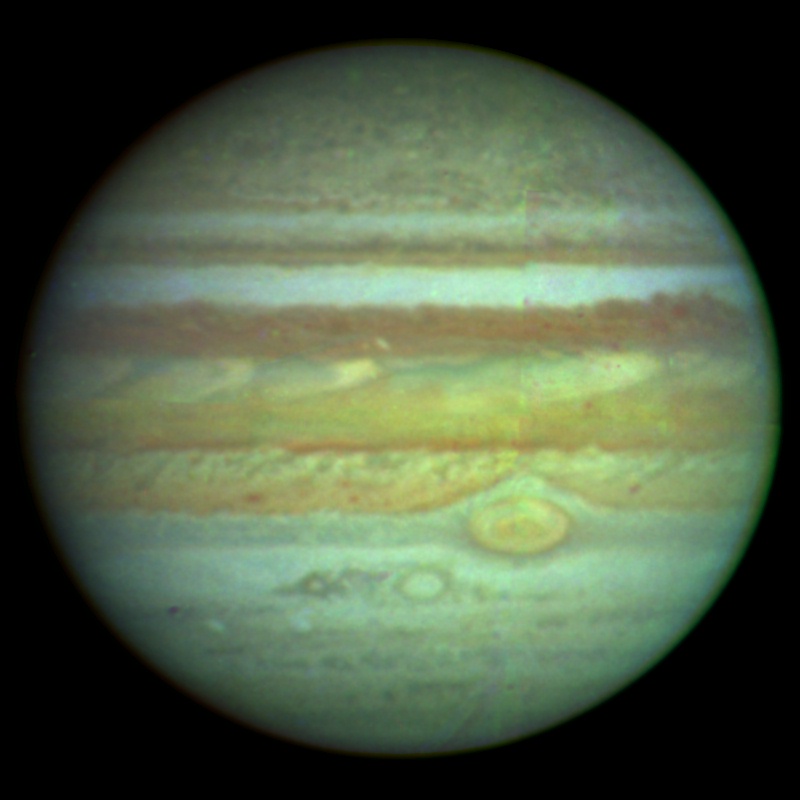6. Computing the composition:
The other problem is to decide on a composition. There are many
combinations of materials that will give the right total mass. How
can we decide which composition is correct when our only measurements are
from outside?
6.1 We can only measure integral properties of the density distribution.
One such integral is the mass.

6.2 Another possibility is the moment of inertia

The only problem with this is that there is no good way to measure the
moment of inertia. So it is not terribly useful. It turns out
that there is a set of quantities that are related to the moment of inertia
that can give more information:
6.3 When a body is rotating it becomes oblate because in addition
to the force of gravity, there is also a centrifugal force. This
is not trivial to compute, since as the centrifugal force works, it changes
the mass distribution that, in turn, changes the gravitational field, which
affects the centrifugal force, etc. The problem is nonlinear.
There are methods to compute the shape of a rotating body, and its resultant
gravitational field by successive approximations. In such a case,
instead of the usual inverse distance relation, we get that the potential
can be written as

where Re is the equatorial radius of the planet, Pn
is the n'th Legendre polynomial, q is the colatitude and Jn
is the n'th gravitational moment. These moments are integrals of
the density distribution and can be determined from measurements of the
external gravitation field of the planet (using the orbits of its satellites,
for example). In this way some additional limits can be put on the
density distribution. In practice, with the Voyager flybys, we have good
measurements of J2 and J4, and some information on
J6. A mass sitting on the surface of the planet will not
only feel this gravitational potential, but will also feel a centrifugal
force. This can be written in terms of a potential as well and combined
with the gravitational term to give

Now the second Legendre polynomial is given by P2(cos θ)
= (3 cos2 θ - 1)/2, so

Furthermore, since the Jn's get smaller as n increases, let us limit
ourselves to the first approximation where n = 1. In this case the
potential becomes

Now the planet will assume a shape such that the surface is an equipotential.
In such a case, the shape of the planet can be approximated by

where f is the flattening or oblateness, given by f = (Re
- Rp)/Re. If we rewrite this in terms of Legendre
polynomials we get

The potential on this surface is then given by substituting Rs
for r in the expression for the total potential. This gives a very
messy expression, but if we assume that any terms of the order of J2
or f are small compared to 1, and terms of the order of J22 or
f2 or J2f or higher are negligible, then we can get
a much simpler (though approximate) expression which looks like

But since Rs is an equipotential, it cannot depend on θ
so the second bracket must be exactly zero. This gives a relation
between J2, f, and ω that must always be satisfied:

Note that the second term is basically the ratio of the centrifugal
to gravitational forces. So long as this term is small our approximation
works. In any case, if we can measure any two of these three quantities,
we can compute the third.
6.4 Results: What we learn is that the density distribution
corresponds to a core of around 5-10 Earth masses, surrounded by an envelope
of hydrogen and helium in the solar ratio with an admixture of about 30
Earth masses of heavier material. |













